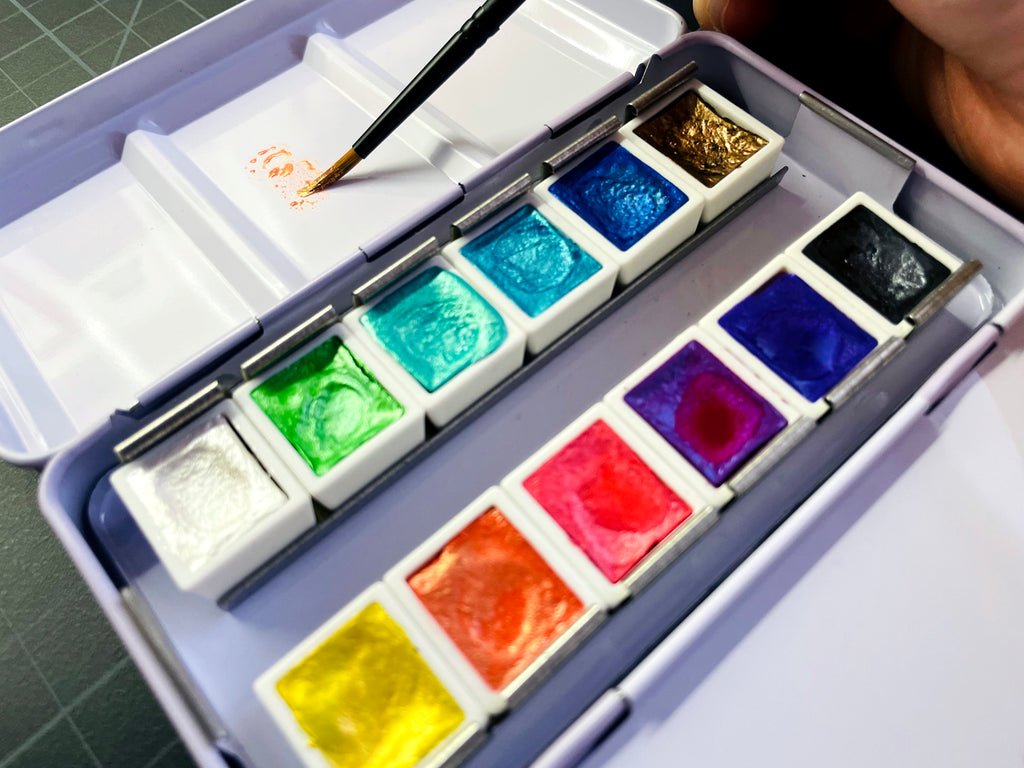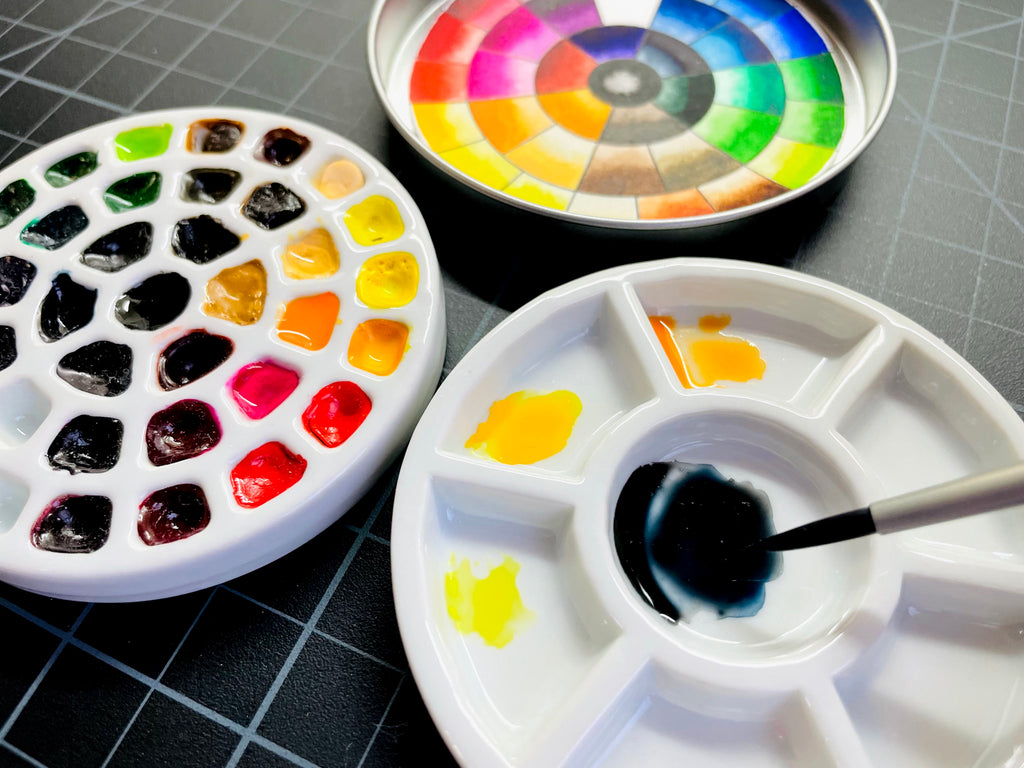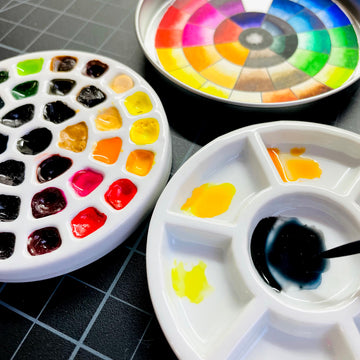What makes a palette a good palette? I used to think simple scrap paper or wax paper would be fine (spoiler: it’s not!). There’s something to be said about this often overlooked tool because it’s easy to settle for the cheapest option.
In this blog, we’ll look at the pros and cons of each type of palette, and I’ll give a few tips for palette use.
.
A Matter of Material
The most significant factor that makes one palette different from another is the material. While one can make a palette from any material (re: paper as an example), it’s best to use something designated as a paint palette in the first place.

The most basic is the plastic palette. Many beginners start with this palette, which is an excellent option because it’s light and cheap. It’s the best choice for acrylic artists because it’s washable and durable. It’s also suitable for Plein air painters, as they’re easy to carry around and easy to clean on the fly.
A big downside is how the paint beads on the plastic surface. The water used in watercolours makes the paint slide around just as water does when it interacts with plastic.
You can counter this beading by slightly roughing up the plastic surface with a gentle scrubbing sponge before using it, or, like with my plastic palette, use it enough times that microscopic scratches created from use prevent the paint from beading.
Bonus tip: If you plan to use a plastic palette, pick opaque white because it will allow your colours to show clearly without being affected by the palette’s colour. I’ve also seen transparent plastic palettes, but I find that seeing through the palette is more distracting than helpful.
Another downside is that plastic can be stained by some paints, even after a thorough cleaning. It is possible to counter the staining by mixing the same or similar colours in the same section each time.
Some cheaper plastic palettes may yellow over time, and plastic is not an environmentally friendly choice, but plastic palettes are generally okay to use.

The next type is the metal palette. These palettes are not as light as plastic, especially because the paint wells are usually plastic inserts. If you like to travel with your paint, they are a good choice because they often come with a metal loop to stick your finger through for stability.
I highly recommend scrubbing the mixing surfaces with an old toothbrush and toothpaste for new metallic palettes because beading could occur (as seen in the picture above, with an unprepped metal palette).
I also suggest cleaning and drying the palette thoroughly before you store it because the exposed parts of the metal could rust – especially around the hinges.
Otherwise, metal is a solid choice for a palette, and its enamelled surface gives a more luxurious feel than a plastic palette. You could try one for yourself with one of Etchr’s paint sets! You can even slot in some of your watercolour pans in the middle or add a travel brush for easy Plein air painting.

The last and arguably the best type of palette is the porcelain palette. There’s no beading on its surface, and they don’t stain, unlike the other two palettes. They’re easy to wash and last longer than a lifetime, so if you haven’t tried one yet, I highly recommend you do so ASAP!
Perhaps the only downsides are that they’re breakable/chippable and pretty heavy, making them more suitable for the studio than outdoor use. They also usually don’t have a lid, so they could collect dust if you don’t cover them with something.
However, if you’re looking for purely the best mixing surface, porcelain really can’t be beaten. Etchr even makes portable porcelain palettes, so if you’re hesitating because you like to paint Plein air, you can safely get the mini palette for your travels! They’re just a little tricky to hold while painting, so it’s best to set them down when painting.
If you want to try a porcelain palette before investing, buy a porcelain plate from a kitchenware store to test the painting surface. Be sure you don’t eat from the plate because there could be toxic paint residue left, even after cleaning.
.
To Suit Your Palate

If you’re still not sure what type of palette to get, I suggest thinking about how you paint. Are you someone who likes to be constantly on the move or paint outdoors? Or do you prefer staying inside most of the time? Of course, this doesn’t mean you can’t get more than one palette. It’s always a good idea to pick the best palette for the occasion in shape and size.
Whatever the case, I hope this blog has helped demystify this humble painting tool and helped you make an informed decision about buying a palette.
What kind of paint palette do you have? If you have more than one, do you have a favourite? Share with us in the comments below!



3 comments
Question: I have been doing watercolor for a year. I use a plastic pallette with a lid and use porcelain plates for mixing. Don’t we need to cover our paints when not in use? My paints get hard and dry if I don’t close the lid on my pallette. Otherwise, I would love to buy a ceramic pallette. Please elaborate.
Thank you very much,
Sylvia
How about bullet proof glass palettes available in the market, especially the one made by Mijello, South Korea.
Love my Mini Palette 🙌